 Most viewed - Aisho 愛荘町 Most viewed - Aisho 愛荘町 |

Crane design in temari650 views
|
|

It makes you wonder how they fit the temari threaded ball into the round glass bottle.475 views
|
|

Some balls have tassels.455 views
|
|

Bin-temari monument. "Bin" means bottle, and "temari" is a threaded ball. The bin-temari is a round glass ball with a threaded ball inside.440 views
|
|

Bin-temari in Echigawa, Shiga. Echigawa's bin-temari history goes back to around 1840 when its oldest bin-temari was made. However, this traditional art died out with the death of Aoki Hiro in 1973, Echigawa's last bin-temari maker.438 views
|
|

Kongorinji's Main temple roof drowning in fall leaves430 views
|
|

Bin-temari come in different sizes and an infinite number of threaded-ball designs. It also makes a great wedding gift since the round shape symbolizes harmony of the heart and family. You can also clearly see inside. 中がよく(仲良く)見える418 views
|
|

The ball is actually hollow like a balloon. It is inserted into the bottle in a deflated state, then expanded into a ball. The museum also has a fascinating video showing how temari is made.417 views
|
|

Temari manhole cover in Aisho, Shiga397 views
|
|

On display are temari balls from other parts of Japan.328 views
|
|

Well-known bin-temari maker.322 views
|
|

After Aoki's death, a temari preservation society was formed and the craft was passed on based on Aoki's husband's memory of how his wife made it. Besides Echigawa, only a few other places in Japan still make bin-temari.315 views
|
|

314 views
|
|

Misaki Shrine Fire Festival in Aisho. The shrine has a 5-meter tall pile of bamboo which is lit to make a towering inferno within the shrine grounds. Very dramatic. Also see the video at YouTube.298 views
|
|

More yellow and red286 views
|
|

Kongorinji's Temple Hondo, a National Treasure in Aisho, Shiga.285 views
|
|

Temple Hondo, a National Treasure282 views
|
|

Manhole in Echigawa-juku, Shiga, with a temari (thread ball) design.280 views
|
|

Showcase full of bin-temari.278 views
|
|

Bin Temari no Yakata Museum exhibits temari threaded balls in round glass bottles. Temari is a symbol of Echigawa. Near Echigawa Station. Intersection in Echigawa with a bin-temari monument. Map276 views
|
|

Panel displays showing the history of Echigawa.260 views
|
|

Beauitful leaves256 views
|
|

Echigawa-juku was the sixty-sixth station or post town (shukuba) of the sixty-nine stations on the Nakasendo Road. It is the sixth Nakasendo station in Shiga (following Takamiya-juku in Hikone), and one of ten Nakasendo stations in Shiga.255 viewsIn front of Echigawa Station, a sign point the way to Echigawa-juku (go right).
|
|

Bin-temari mail box in front of Echigawa Station.253 views
|
|

While traveling, St. Shinran was unable to cross the Echigawa River since there was a flood. So he stayed at this temple temporarily. During that time, he planted a plum tree which bloom red plum blossoms.230 views
|
|

Finally we see a building227 views
|
|

On Aug. 9, the Jizo statues are lit with candles.224 views
|
|

217 views
|
|

Temple Hondo215 views
|
|

On Aug. 9, the Jizo statues are lit with candles.214 views
|
|

Entrance to the Echigawa Bin-temari Museum. Free admission.207 views
|
|

Temple bell205 views
|
|

Note: The following photos were taken years ago. More recent photos are at the beginning of this album. Kongorinji is a Tendai Buddhist temple established in 741 and the middle temple in the Koto Sanzan Temple Trio. 190 viewsThe main temple hall is a National Treasure housing an 11-faced Kannon statue and 13 other statues designated as Important Cultural Properties.
They come by the busloads. If possible, you should avoid visiting the Koto Sanzan Temple Trio and Eigenji during the weekend in fall. If possible, you should avoid visiting the Koto Sanzan Temple Trio and Eigenji during the weekend in fall.
|
|

Quilt from Echigawa's sister city of West Bend, Wisconsin.190 views
|
|

3-story pagoda, reconstructed in 1978189 views
|
|

Heading south on the Nakasendo in Echigawa-juku.187 views
|
|

Echigawa Bin-temari-no-Yakata or the Echigawa Bin-temari Museum. Open 10 am - 6 pm, closed Mon., Tue., last Wed. of the month, and national holidays. 7-min. walk from Echigawa Station. 愛知川びん手まりの館171 views
|
|

Aerial photo of Echigawa.169 views
|
|

Kongorinji's main temple hall is a National Treasure housing an 11-faced Kannon statue and 13 other statues designated as Important Cultural Properties. Aisho, Shiga. 167 views
|
|

3-story pagoda164 views
|
|

Nakasendo Road in Shiga163 views
|
|

The museum complex includes the Echigawa Public Library.162 views
|
|
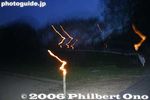
Held annually on May 4, the Misaki Shrine Fire Festival (hi-matsuri) has local people carry 2-meter long torches from their homes to the shrie where a 5-meter tall pile of bamboo is lit to make a towering inferno.158 viewsA taiko drum is also carried and beaten.
|
|

Front gate. The temple was first built in 741 as ordered by Emperor Shomu. It later became a Tendai Buddhist temple in 850. It is famous for "blood-red" maple leaves in autumn. Map157 views
|
|

Inside the courtyard of the Echigawa Bin-temari Museum.155 views
|
|

In a small room in the library is Echigawa's sister city exhibit. Echigawa used to be a separate town before it merged with Aito to form Aisho town.153 views
|
|

Echigawa Fire Dept.150 views
|
|

149 views
|
|

Ohmi Railways Echigawa Station. The station building, named Ruburu Echigawa, has a tourist information counter and exhibition gallery.147 views
|
|

"Blood-red" maples137 views
|
|
|

Entrance to Echigawa-juku at the northern end. Echigawa-juku was the sixty-sixth station or post town (shukuba) of the sixty-nine stations on the Nakasendo Road. Map136 views
|
|

"Blood-red" maples135 views
|
|

Garden135 views
|
|

Pocket park in Echigawa-juku.132 views
|
|

More path foilage131 views
|
|

Sister city certificate for West Bend, Wisconsin, USA, in Echigawa Public Library.130 views
|
|

Large intersection has an Echigawa-juku monument.129 views
|
|

Toward the south end of Echigawa-juku. Bridge has a temari decoration.127 views
|
|
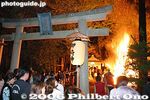
Torii at Misaki Shrine Fire Festival.126 views
|
|

From the city of West Bend, Wisconsin.125 views
|
|

Temari decoration on bridge.123 views
|
|

Inside 3-story pagoda122 views
|
|

Nakasendo in Echigawa-juku121 views
|
|

Foilage on the path120 views
|
|

Garden119 views
|
|

This is a high-class ryotei restaurant called Omi Shonin-tei (近江商人亭). Built in the 1920s, it used to be an Omi Merchant's second home who sold hemp cloth.119 viewsThis is also one location where the film Idai Naru, Shurararabon (偉大なる、しゅららぼん The Great Shu Ra Ra Boom) was filmed. The Natsume family's dojo scene.
|
|

South end gate of Echigawa-juku.119 views
|
|

Nice path with fall colors118 views
|
|

The ukiyoe print by Hiroshige shows a bridge across Echigawa River. It was toll-free (Muchin-bashi).118 views
|
|

115 views
|
|

1000 Jizo statues. On Aug. 9, the Jizo statues are lit with candles.114 views
|
|

Garden114 views
|
|

Garden at Kongorinji112 views
|
|

Traditional-style building112 views
|
|

Way to Homanji temple where St. Shinran once stayed.112 views
|
|

They come by the busloads. If possible, you should avoid visiting the Koto Sanzan Temple Trio and Eigenji during the weekend in fall. If possible, you should avoid visiting the Koto Sanzan Temple Trio and Eigenji during the weekend in fall. Stone marker.111 views
|
|

It's all too beautiful111 views
|
|

Meiji Period-style mail box. It's a real mail box so you can deposit your mail here.110 views
|
|

109 views
|
|

109 views
|
|

109 views
|
|

The street corner has a pocket park for an Echigawa-juku monument showing an ukiyoe print of the town. A stone marker also points the way to Takamiya-juku.109 views
|
|

106 views
|
|

After the bon fire, the taiko drum procession leaves the shrine and parades around the village.106 views
|
|

St. Shinran statue and plum tree.106 views
|
|

Entering the path of little stone Jizo statues105 views
|
|

More Jizo statues105 views
|
|

On Aug. 9, the Jizo statues are lit with candles. Kongorinji temple in Aisho, Shiga.105 views
|
|

Temple Hondo105 views
|
|

105 views
|
|

104 views
|
|

103 views
|
|

Homanji temple Hondo hall in Echigawa-juku, Shiga. 宝満寺103 views
|
|

Homanji Hondo103 views
|
|

Entrance to Takeheiro. It's not open to the public unless you want to dine there. 竹平楼103 views
|
|

Takeheiro on the left, along the Nakasendo Road in Echigawa-juku, Shiga.103 views
|
|

102 views
|
|

Hiroshige's woodblock print of Echigawa-juku (66th post town on the Nakasendo) from his Kisokaido series. On the left across the river is Mt. Kannonji (Kinugake).102 views
|
|
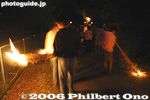
Procession of local residents carrying torches to the shrine. Map101 views
|
|

Fire finally dies down.101 views
|
|

View from Hondo hall.101 views
|
|

Another famous building remaining in Echigawa-juku. This is the Takeheiro restaurant where Emperor Meiji once stayed.101 views
|
|

100 views
|
|

The plum tree blooms in March.100 views
|
|

Marker indicating that St. Shinran, founder of the Jodo Shinshu Buddhist Sect, once stayed at this temple.99 views
|
|

Statue of St. Shinran (1173-1263) in front of the plum tree which he planted. The temple also has a scroll written by Shinran.99 views
|
|

Tour bus parking halfway up the mountain98 views
|
|

3-story pagoda98 views
|
|
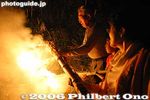
98 views
|
|

Taiko drum beating98 views
|
|

Inside Homanji Hondo main hall in Echigawa-juku, Shiga Prefecture98 views
|
|

97 views
|
|

Gate to Homanji temple.97 views
|
|

Gate to main hall. Tendai Buddhist temple established in 741 and the middle temple in the Koto Sanzan Temple Trio.96 views
|
|

96 views
|
|

The torch procession rings out.96 views
|
|

And more leaves95 views
|
|

3-story pagoda94 views
|
|

Shops along the Nakasendo94 views
|
|

Towering inferno of bamboo on fire. The shrine has a 5-meter tall pile of bamboo which is lit to make a towering inferno within the shrine grounds. Very dramatic. 93 views
|
|

93 views
|
|

Looks like a former bank building.93 views
|
|

Hachiman Jinja Shrine, Echigawa-juku93 views
|
|

Stone monument at Takeheiro indicating that Emperor Meiji was here.93 views
|
|

3-story pagoda92 views
|
|

Some modern buildings along the Nakasendo in Echigawa-juku92 views
|
|

On Aug. 9, the Jizo statues are lit with candles.91 views
|
|

Lantern91 views
|
|
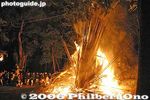
90 views
|
|

Hachiman Jinja Shrine in Echigawa-juku, Shiga90 views
|
|

Way to Hachiman Shrine.89 views
|
|

Aisho, Shiga manhole89 views
|
|

88 views
|
|

88 views
|
|

Yellow and red87 views
|
|
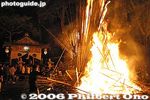
87 views
|
|

87 views
|
|

The shrine has ties to Prince Shotoku Taishi who hid here from an enemy during a war. In appreciation, he donated rice paddies to the shrine.87 views
|
|

86 views
|
|

Hachiman Jinja Shrine Honden main hall is a Shiga Prefecture Cultural Property.85 views
|
|

Ohmi Railways Echigawa Station platform.84 views
|
|

Modern homes in Echigawa84 views
|
|

Omi Hemp Fabric Museum offer hands-on lessons to make small hemp fabric goods. Closed weekends and national holidays. 近江上布伝統産業会館83 views
|
|

City logo83 views
|
|

Former Echi Town Hall built in 1922.82 views
|
|

Ohmi Railways train at Echigawa Station.79 views
|
|

Ohmi Railways Echigawa Station platform.74 views
|
|

Ohmi Railways Echigawa Station73 views
|
|

Parallel to Echigawa Station is the elevated shinkansen tracks.73 views
|
|

73 views
|
|

Shinkansen tracks and cycling path72 views
|
|

Former Echi Town Hall72 views
|
|

Former Echi Town Hall71 views
|
|

Ohmi Railways Echigawa Station platform.70 views
|
|

Railway crossing69 views
|
|

Ohmi Railway track63 views
|
|

Ohmi Railway track60 views
|
|
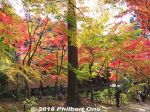
Another prime spot for autumn foliage at Kongorinji.52 views
|
|
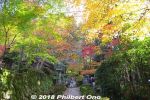
49 views
|
|
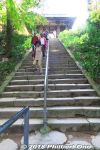
Steps to the Hondo main worship hall.48 views
|
|
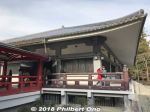
Aisho Town Museum.48 views
|
|
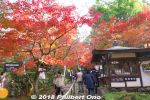
Temple ticket admission booth. ¥500 拝観受付 47 views
|
|
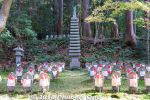
Garden of many Jizo statues.46 views
|
|
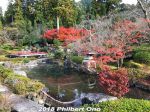
Small garden outside Aisho Town Museum.46 views
|
|
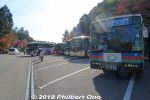
Shuttle bus on the right going to the next Koto Sanzan Temple.46 views
|
|
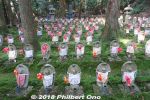
45 views
|
|
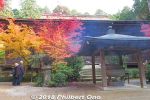
Hondo main hall45 views
|
|
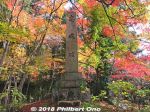
45 views
|
|
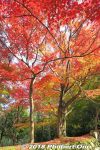
44 views
|
|
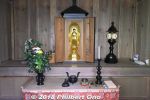
Inside Nishiya-do hall housing Amida Nyorai buddha. 西谷堂 阿弥陀如来44 views
|
|

About Kongorinji's famous temple garden.44 views
|
|
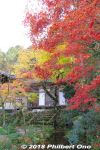
44 views
|
|

Priest's residence next to the famous garden. Reconstructed in 1978. 明寿院 44 views
|
|
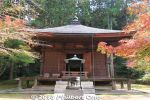
Jizo-do Hall built in 1997. Believers can train here. 地蔵堂44 views
|
|
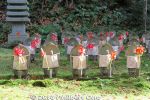
44 views
|
|

44 views
|
|
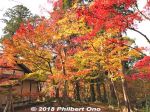
Autumn foliage near the Dojo. 44 views
|
|
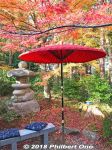
44 views
|
|
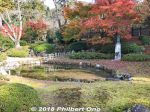
Small garden outside Aisho Town Museum.44 views
|
|
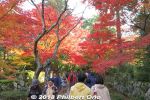
After the ticket admission booth, it's a delightful and colorful path to the temple.43 views
|
|
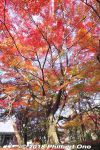
43 views
|
|
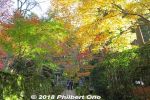
43 views
|
|
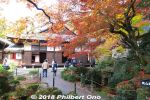
Famous temple garden built in the Momoyama Period (16th c.) to Edo Period. The building is the Kongorinji priest's residence. 名勝庭園 本坊43 views
|
|
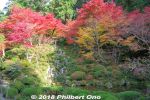
43 views
|
|
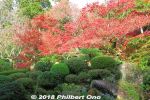
43 views
|
|
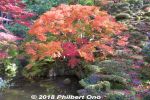
43 views
|
|
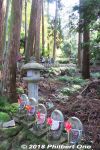
43 views
|
|
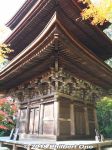
Kongorinji's three-story pagoda, National Important Cultural Property.43 views
|
|
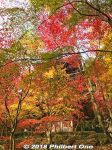
Path back to the main gate. Lots of eye candy.43 views
|
|
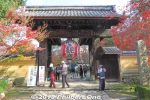
Kongorinji is a Tendai Buddhist temple established in 741 and the middle temple in the Koto Sanzan Temple Trio. The main temple hall is a National Treasure housing an 11-faced Kannon statue and 13 other statues designated as Important Cultural Properties.42 viewsThis is the Somon main gate to the temple. 総門
|
|
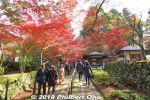
Off-season, normally you take a taxi (15 min.) from JR Inae Station if you don't have a car. There's a regular taxi that leaves the station once an hour.42 views
|
|
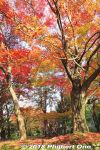
42 views
|
|

Akamon Gate 赤門42 views
|
|
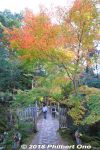
42 views
|
|
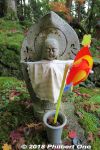
42 views
|
|
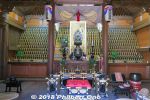
Inside the Jizo-do Hall built in 1997. 地蔵堂42 views
|
|
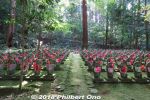
42 views
|
|
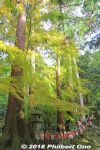
42 views
|
|
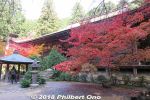
42 views
|
|

Kongorinji's three-story pagoda, National Important Cultural Property.42 views
|
|
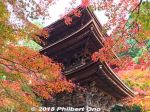
Kongorinji's three-story pagoda, National Important Cultural Property amid maple leaves.42 views
|
|
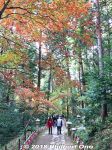
42 views
|
|
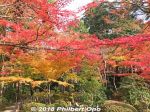
42 views
|
|
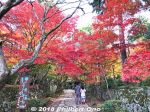
42 views
|
|

41 views
|
|
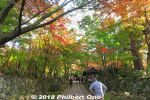
41 views
|
|
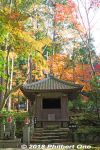
The first building you see. Nishiya-do hall housing Amida Nyorai buddha. Built in the Edo Period. 西谷堂 阿弥陀如来41 views
|
|
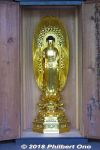
Nishiya-do hall housing Amida Nyorai buddha. Kongorinji Temple, Aisho, Shiga. 西谷堂 阿弥陀如来41 views
|
|
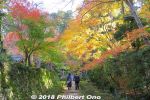
41 views
|
|

Priest's residence next to the famous garden. Reconstructed in 1978. 明寿院 41 views
|
|

41 views
|
|

41 views
|
|

41 views
|
|
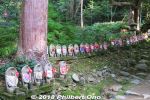
41 views
|
|
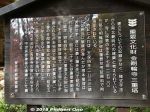
About the three-story pagoda, National Important Cultural Property.41 views
|
|
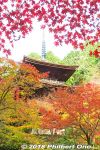
Kongorinji's three-story pagoda, National Important Cultural Property.41 views
|
|

41 views
|
|
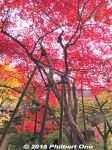
Looks like red maples are raining on you. Just spectacular.41 views
|
|

41 views
|
|
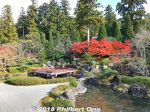
Small garden outside Aisho Town Museum.41 views
|
|
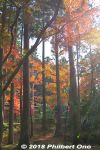
40 views
|
|

40 views
|
|

Kongorinji's main temple hall is a National Treasure housing an 11-faced Kannon statue and 13 other statues designated as Important Cultural Properties. Aisho, Shiga.40 views
|
|
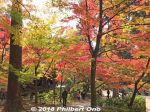
40 views
|
|
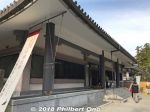
Aisho Town Museum.40 views
|
|

The temple was first built in 741 as ordered by Emperor Shomu. It later became a Tendai Buddhist temple in 850. It is famous for "blood-red" maple leaves in autumn.39 views
|
|
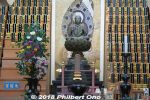
Inside the Jizo-do Hall built in 1997. 地蔵堂39 views
|
|
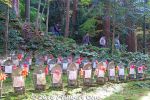
39 views
|
|

39 views
|
|
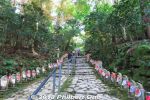
Long path of Jizo statues, a trademark of Kongorinji Temple.39 views
|
|
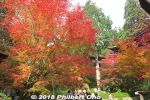
39 views
|
|
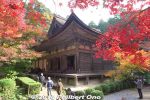
Built in 1288, Kongorinji Hondo main hall, National Treasure in autumn.39 views
|
|
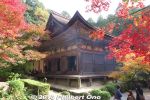
Kongorinji Hondo main hall, National Treasure amid autumn maple leaves.39 views
|
|
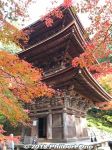
Kongorinji's three-story pagoda built in 1246, National Important Cultural Property.39 views
|
|
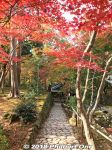
39 views
|
|
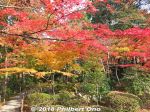
39 views
|
|

Very artistic looking autumn leaves.39 views
|
|

Near Koongorinji's main gate is a parking lot and bus stop.39 views
|
|
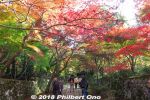
38 views
|
|
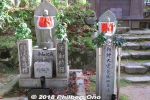
38 views
|
|
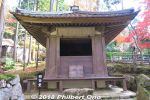
Nishiya-do hall housing Amida Nyorai buddha. Built in the Edo Period. 西谷堂 阿弥陀如来38 views
|
|

38 views
|
|
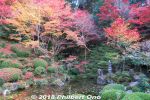
38 views
|
|
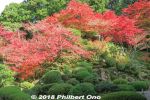
38 views
|
|
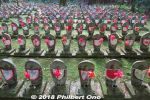
38 views
|
|
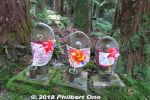
38 views
|
|

38 views
|
|

38 views
|
|

38 views
|
|

38 views
|
|

Inside the Koto Sanzan shuttle bus from Kongorinji to Hyakusaiji. Quite full this day. 38 views
|
|
|
|